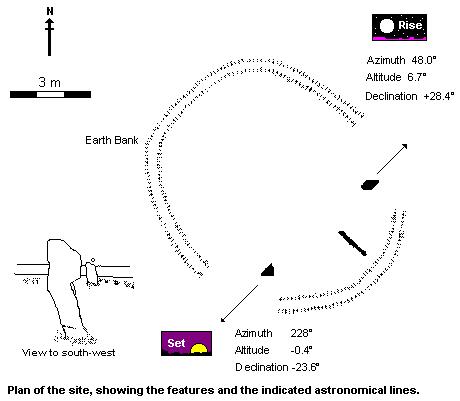
The Thieves standing stones, Galloway
Stones
of Wonder
QUICK LINKS ...
HOME PAGE
INTRODUCTION
WATCHING
THE SUN, MOON AND STARS
THE
MONUMENTS
THE
PEOPLE AND THE SKY
BACKGROUND
ARCHAEOASTRONOMY
USING
THE SITE DESCRIPTION PAGES
VISITING
THE SITES
THE
LEY LINE MYSTERY
THE
SITES
ARGYLL
AND ARRAN
MID
AND SOUTH SCOTLAND
NORTH
AND NORTH-EAST SCOTLAND
WESTERN
ISLES AND MULL
Data
DATES
OF EQUINOXES AND SOLSTICES, 1997 to 2030 AD
DATES
OF MIDSUMMER AND MIDWINTER FULL MOONS, 1997 to 2030 AD
POSTSCRIPT
Individual
Site References
Bibliography
Links
to other relevant pages
Contact
me at : rpollock456@gmail.com
Standing Stones NX404716*
How to find : The site is near an unclassified road which runs parallel to the A714 Newton Stewart to Girvan highway, on the east side of the River Cree. This unclassified road must be taken from Minnigaff (travel north) or at Clachaneasy (travel south). Leave your car near Drannandow, 4km north of Minnigaff. A walk of two kilometres up farm track and open moorland is necessary. A map and compass are essential.
Best time of year to visit : Winter solstice 21st or 22nd December (sunset). Major standstill (northern) moonrise. (see dates).

This site requires some effort to visit, but you will be rewarded by the experience of two tall aligned prehistoric menhirs in a peaceful and isolated setting.
The site consists of two tall stones set on a north-east to south-west line, and a third low slab offset between them. This low slab may not be immediately visible as the site is very overgrown. There is also the remains of a low oval earthen bank measuring 9m x 7.5m surrounding the stones. If this bank is prehistoric, it is a very unusual feature. It may have served to delimit a sacred area, similar to the function of stone circles and henges.
The two tall stones incorporate two alignments. To the southwest, the position of the setting sun at midwinter is shown. To the northeast, an indicated azimuth of 48° and a relatively high horizon altitude of nearly 7° gives a declination of +28.4°, which is the value for the rising moon at its most northerly position during the major standstill. This occurs about every 19 years.
It can be seen that this monument makes use of the simplest possible arrangement to incorporate markers for the two extreme winter positions of the sun and the moon.